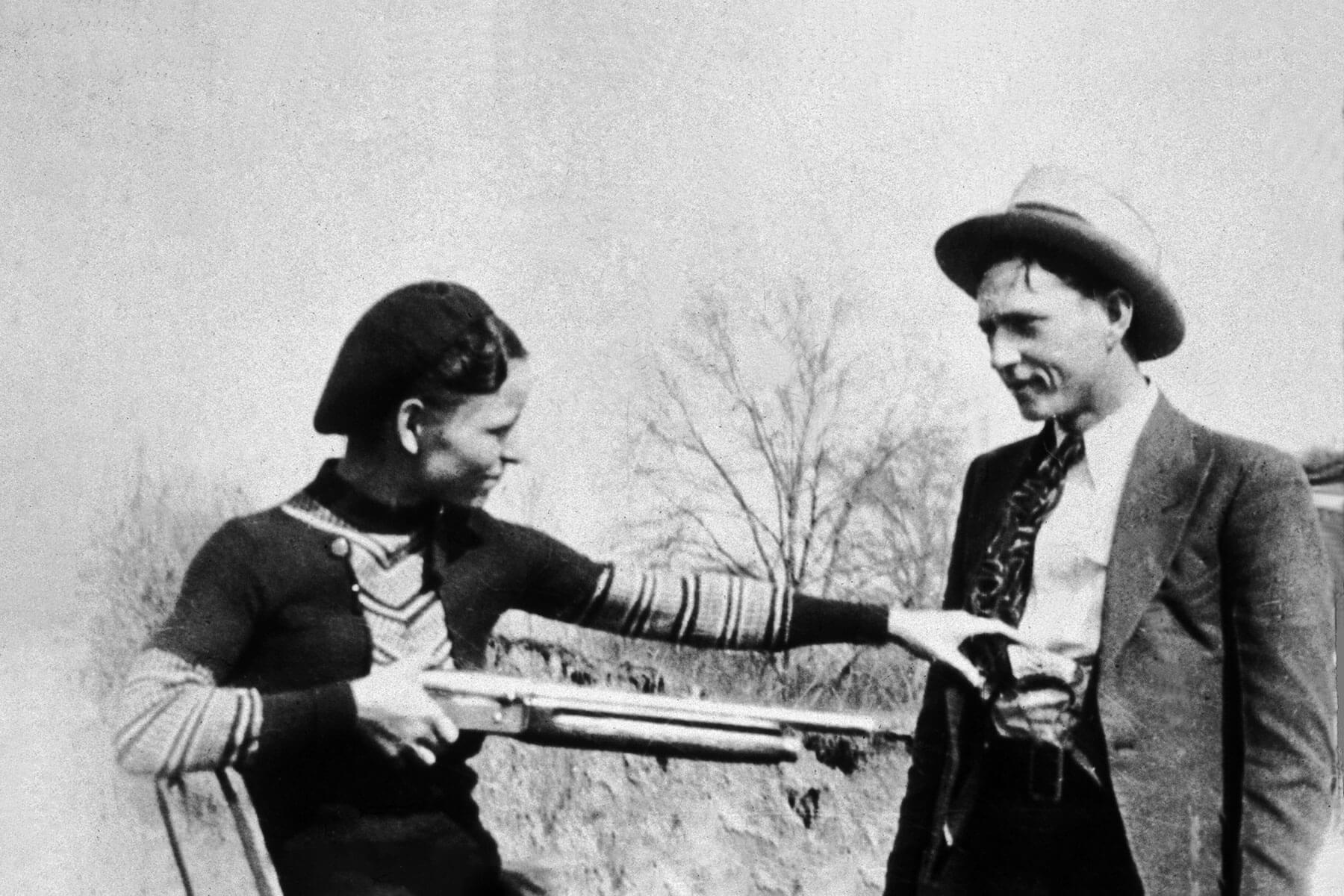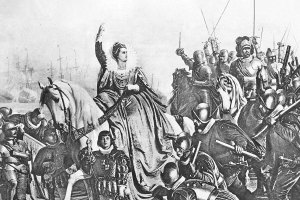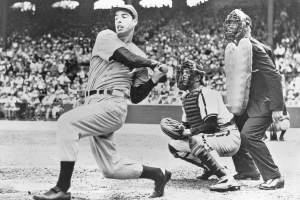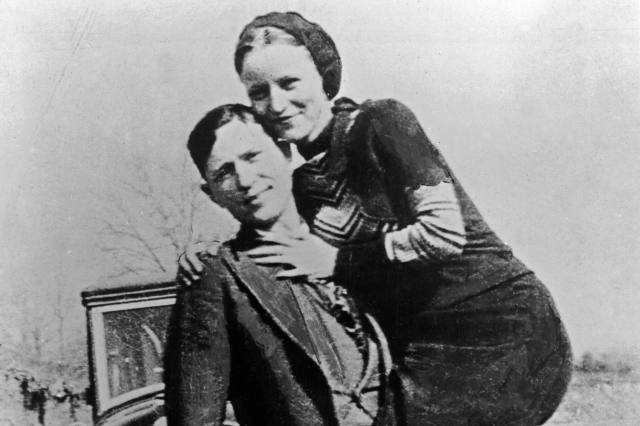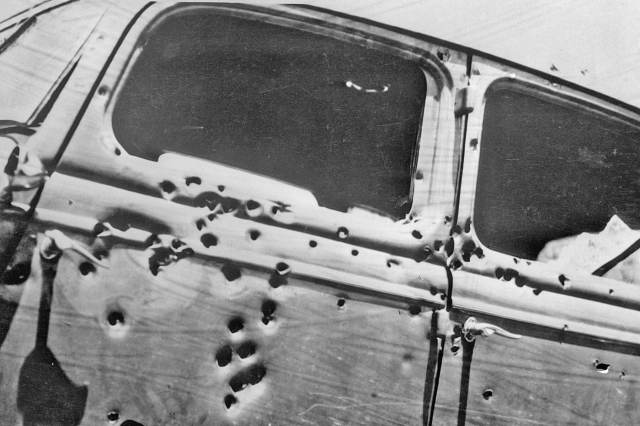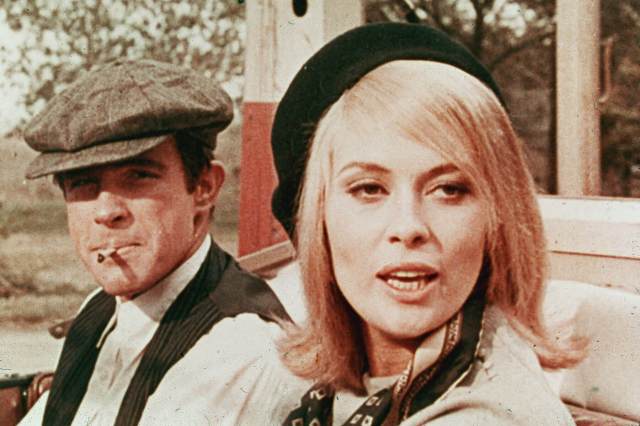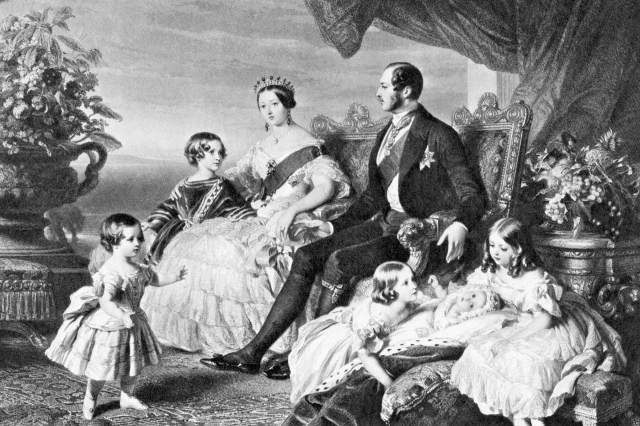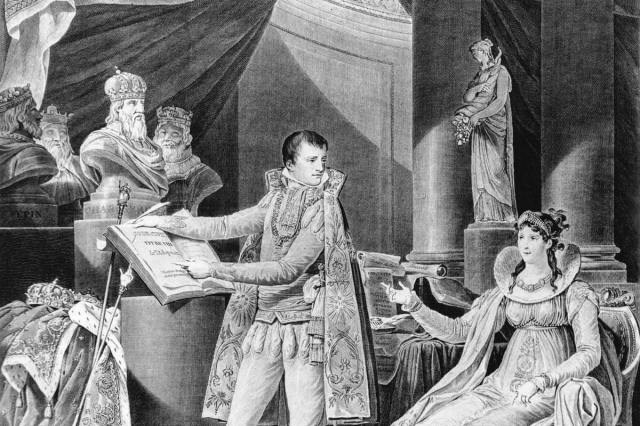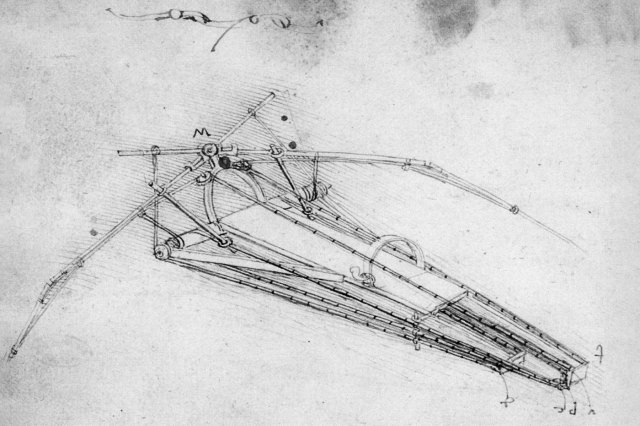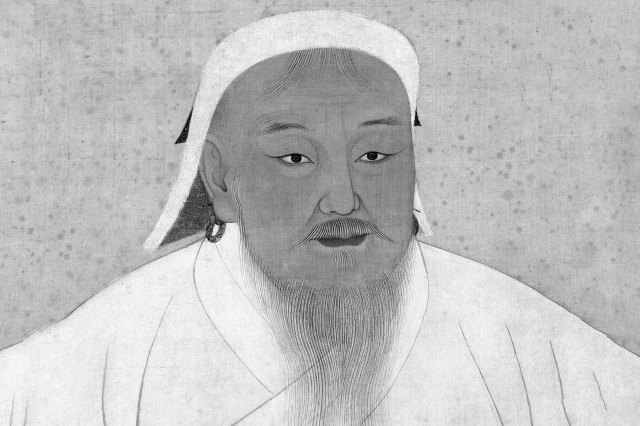5 Facts About the Infamous Crime Duo Bonnie and Clyde
In January 1930, Clyde Barrow and Bonnie Parker met at a friend’s house in Dallas, Texas, and, as the legend goes, it was love at first sight. Their budding courtship was disrupted when Clyde was jailed a month later in Waco, but at Clyde’s request, Bonnie smuggled a gun into the jail, allowing Clyde and two other convicts to escape. It was a temporary freedom, however, as Clyde was soon captured in Ohio and extradited to Texas, serving almost two years in prison before being paroled in February 1932. Bonnie and Clyde were reunited soon after, and Bonnie became part of the Barrow Gang, which included several of Clyde’s friends, his brother Buck, and Buck’s wife, Blanche.
The news stories of Bonnie and Clyde’s criminal adventures captivated a downtrodden nation at the height of the Great Depression. Their outlaw antics and unlikely love story helped turn the gangster and his moll into folk heroes akin to Robin Hood and Maid Marian or Romeo and Juliet. But it wasn’t meant to last. After an increasingly violent crime spree that stretched almost two years, the pair was ambushed and killed by law enforcement in Louisiana in 1934. Their deaths made headlines across the nation, and thousands of people attended their funerals.
Over the years, the exploits of Bonnie and Clyde became synonymous with a kind of romantic lawlessness usually reserved for tales of the Wild West. Here are five surprising facts about one of the most infamous crime duos in American history.
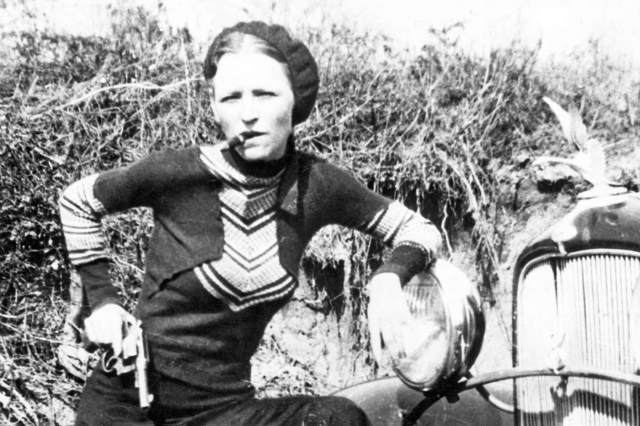
Bonnie and Clyde Were Never Married
Bonnie and Clyde were partners in crime who became immortalized in myth and legend — but they were never married, because Bonnie already had a husband. In 1926, just a few days before she turned 16, Bonnie Parker married her high school sweetheart, Roy Thornton. Their marriage was tumultuous and Thornton was often absent or in trouble with the law. The couple separated numerous times, and Bonnie’s mother Emma recommended divorce, but Bonnie refused. Though she was identified as “Mrs. Roy Thornton” in wanted posters and was still wearing her wedding ring when she was killed, Bonnie personally reverted to her maiden name, and her tombstone reads “Bonnie Parker.” Thornton, who was in prison for robbery when he learned of Bonnie’s death, said, “I’m glad they went out like they did. It’s much better than being caught.” Thornton was shot and killed three years later during an attempted prison break.
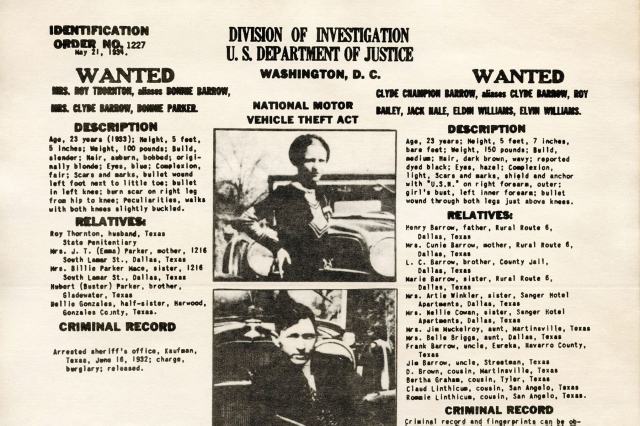
Their Own Photos Contributed to Their Notoriety as Outlaws
When law enforcement raided a Barrow Gang hideout in Joplin, Missouri, officers recovered a camera and undeveloped film. The prints were developed and a few of the shots of Bonnie and Clyde ran in newspapers and tabloids. In one, Bonnie pointed a rifle at Clyde; in another, she had a cigar in her mouth and was holding a revolver. The images contributed to the couple’s notoriety, leading newspapers to describe Bonnie as a “cigar-smoking gun-moll.” But Bonnie’s cigar was just a prop borrowed from another member of the gang. “Tell them I don’t smoke cigars,” she later told a police officer they’d taken hostage and released, when he asked what she wanted the press to know. As for the guns she posed with, there’s no evidence that Bonnie ever killed, or even fired at, anyone. The FBI describes Bonnie’s criminal association with Clyde this way: “Though she probably never fired a shot, she was his willing accomplice.”





